Copyright © 2025 Shenzhen EAI Technology Co.,Ltd.
New Released | World’s First Mass-Produced Consumer-Grade Underwater Green Laser LiDAR——YDLIDAR TW3
By YDLIDAR Staff:2025-09-16
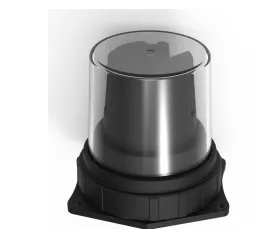
As the pool cleaning robot industry advances toward full intelligence, we face a series of critical technological challenges. Perception bottlenecks: Traditional infrared sensors and cameras are highly susceptible to interference from refractive indices, intense light, and turbid water, leading to positioning drift, obstacle avoidance failures, inefficient cleaning, and frequent user complaints. Intelligence lag: The lack of stable and accurate environmental perception makes it difficult for robots to achieve true autonomous path planning and mapping, trapping product iteration in homogenized competition. In today’s era of rapid AI development, non-intelligent pool cleaning robots seem increasingly out of place.
As a globally leading smart sensor company, EAI Tech deeply understands the challenges and demands of the pool cleaning robot industry. Today, we proudly introduce a groundbreaking solution—the world’s first mass-produced consumer-grade underwater green laser LiDAR, the YDLIDAR TW3. This is not just a smart sensor but a key to breaking technological barriers and enabling generational leaps in product performance, injecting new momentum into the intelligent transformation of the pool cleaning industry.
Addressing Pain Points: How YDLIDAR TW3 Breaks Technological Barriers and Reshapes Pool Cleaning Reliability Standards
1st Feature: 100Klux Anti-Light Technology to Overcome Ambient Light and Turbid Water Interference
Traditional infrared laser LiDARs are easily affected by strong light reflections from water ripples, underwater lighting, and turbid water, causing positioning errors, obstacle avoidance failures, and significantly reduced detection ranges—sometimes below 0.5 meters—greatly diminishing cleaning efficiency. In contrast, EAI’s green laser LiDAR TW3, equipped with proprietary 100Klux strong light suppression technology, offers superior penetration and longer effective ranging underwater, making it ideal for outdoor aquatic environments. Even in turbid water with high suspended particles, it maintains stable and precise detection performance, overcoming surface glare and turbidity interference thoroughly, delivering true all-weather excellence and providing a reliable perceptual foundation for intelligent algorithms.
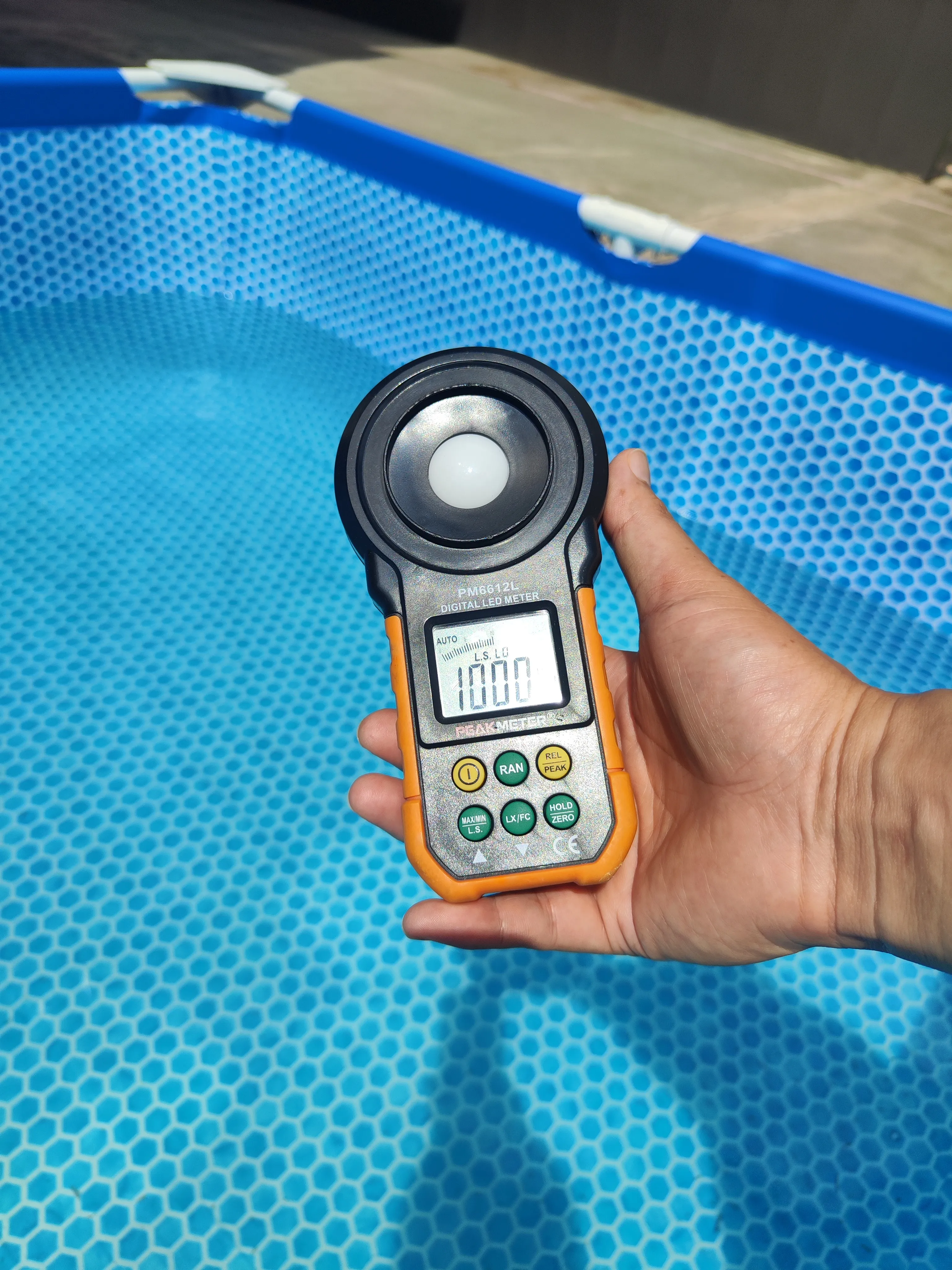 |
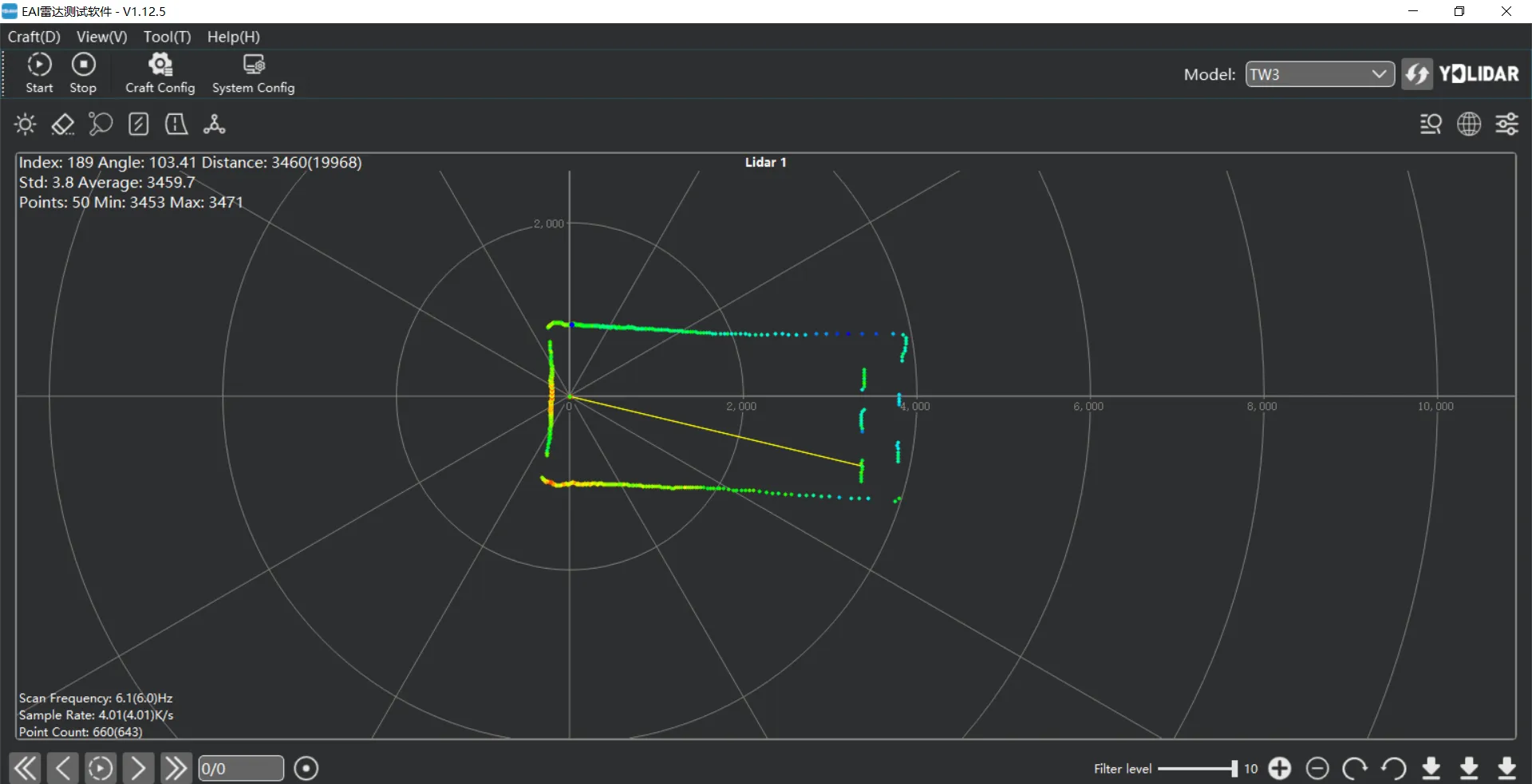 |
Strong Light Resistance Test: TW3 tested under 100KLux light intensity and water turbidity ≤0.5NTU, achieving a ranging distance >3 meters.
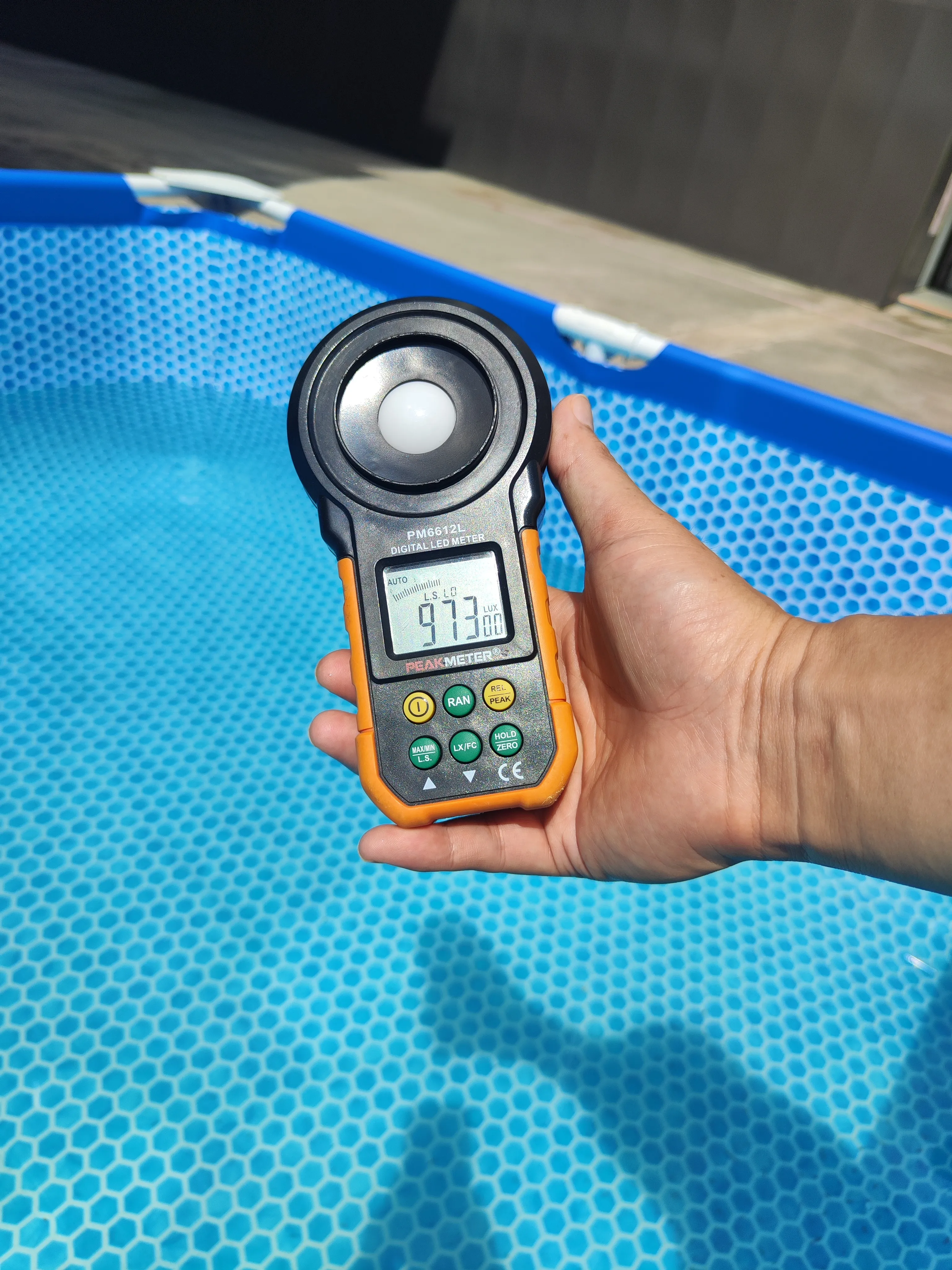 |
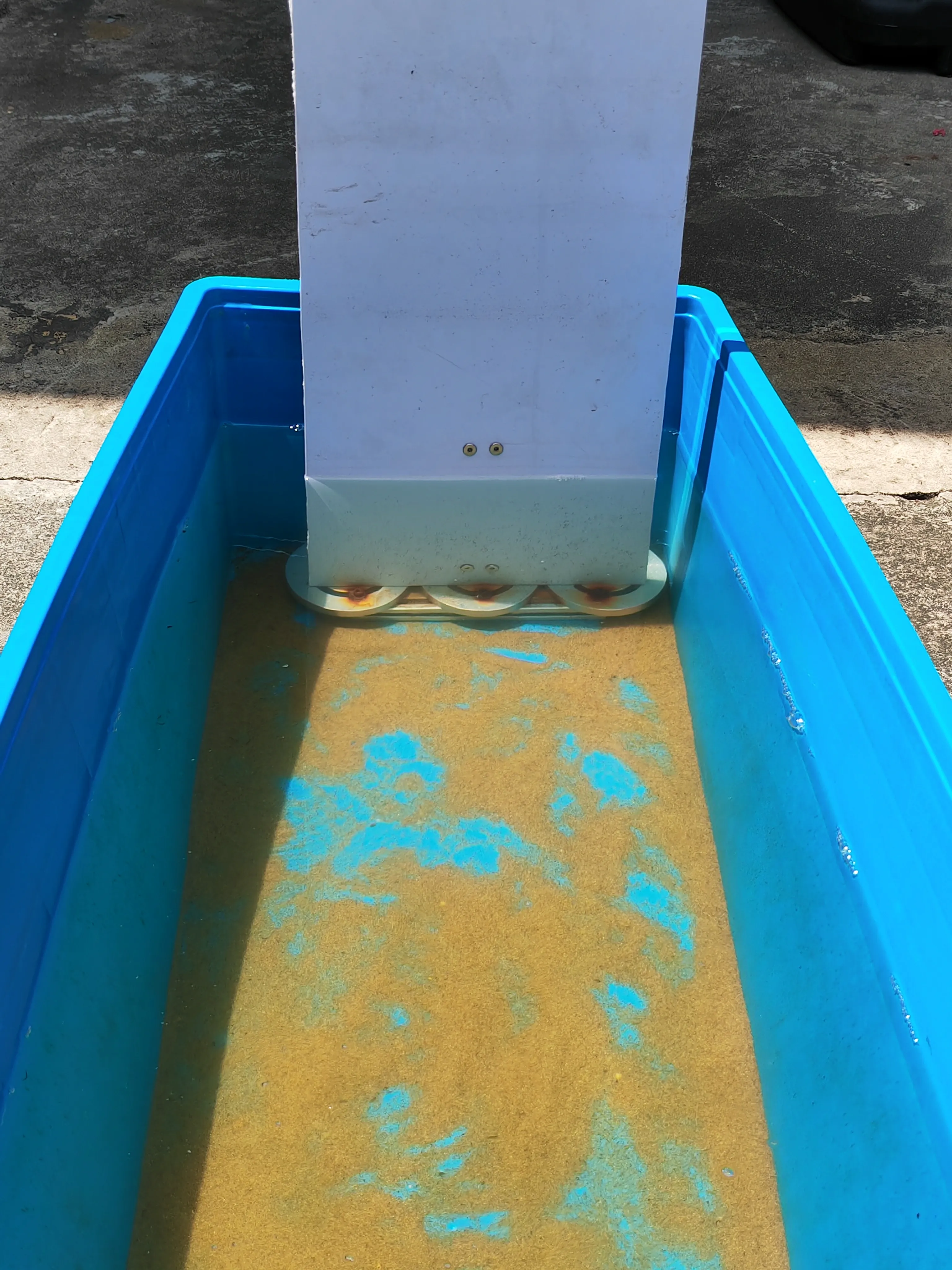 |
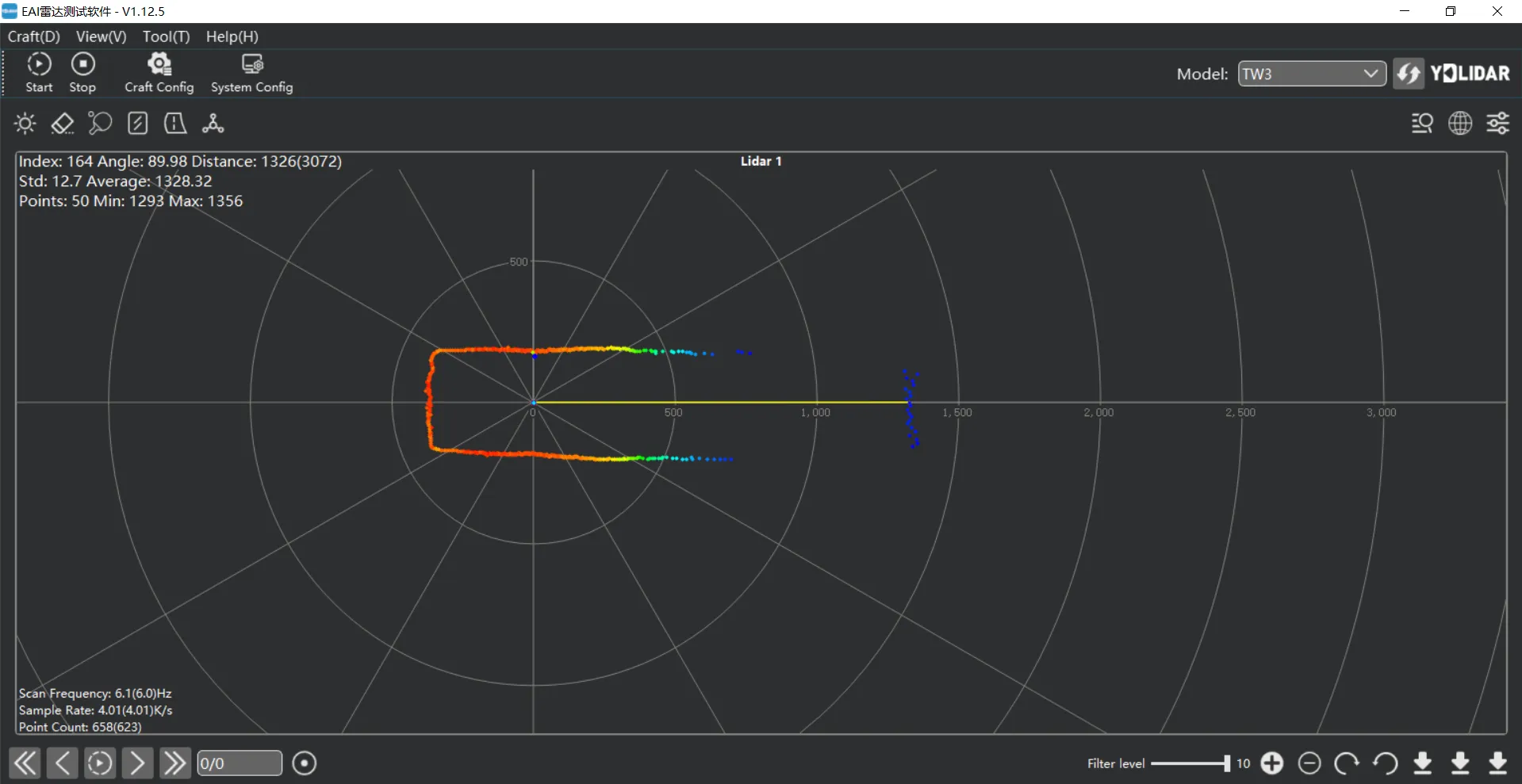
Turbidity Test: TW3 tested under ≤100KLux light intensity and 5NTU turbidity, achieving a ranging distance >1.3 meters.
2nd Feature: Distortion-Free Point Cloud, 360° Scanning for Precise Navigation and Obstacle Avoidance
Many pool cleaning robots still rely on random collision cleaning methods without path planning, resulting in low efficiency. YDLIDAR TW3 utilizes distortion-free point cloud technology and 360° scanning to generate high-fidelity, high-precision underwater environmental point cloud maps in real time, accurately replicating pool floor terrain, steps, drains, and even dynamic obstacles. This enables cleaning robots to achieve centimeter-level precision in real-world map reconstruction, empowering them with precise positioning, autonomous navigation, and intelligent obstacle avoidance capabilities.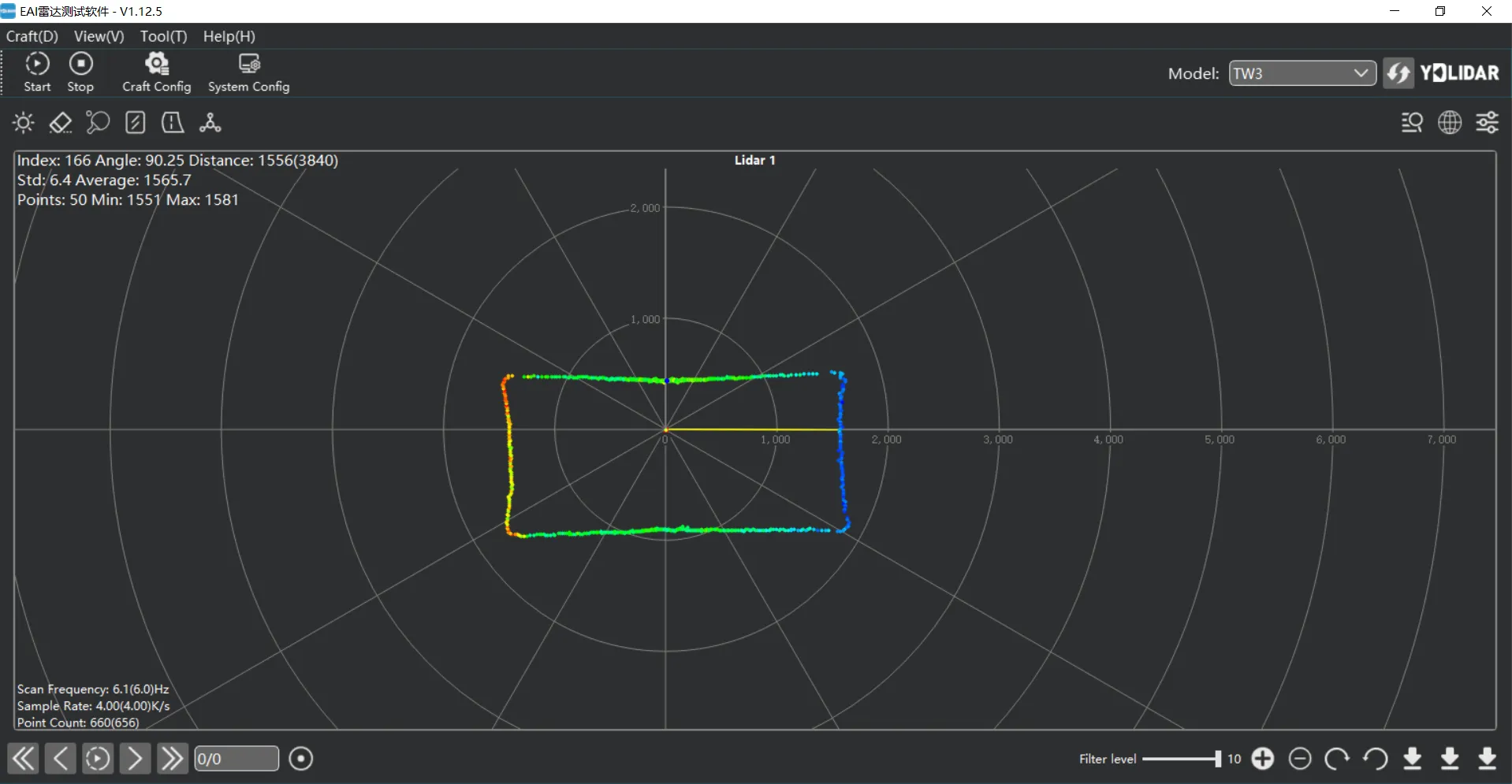
Mapping Test: TW3 fixed on a fixture and placed in a pool for scanning, with normal point cloud output—no broken lines or noise fluctuations.
3rd Feature: Precision Elevation Angle for Perfect Adaptation to Complex Pool Structures
Pool floors exhibit extreme complexity, including slopes, walls, and irregular shapes, making path planning more challenging for underwater robots than for ground robots. YDLIDAR TW3 features an innovative 1° precision elevation angle design, allowing the laser beam to perfectly align with the junction of pool walls and floors, eliminating scanning blind spots in corners and slopes thoroughly, achieving full coverage cleaning, and enhancing end-user satisfaction.
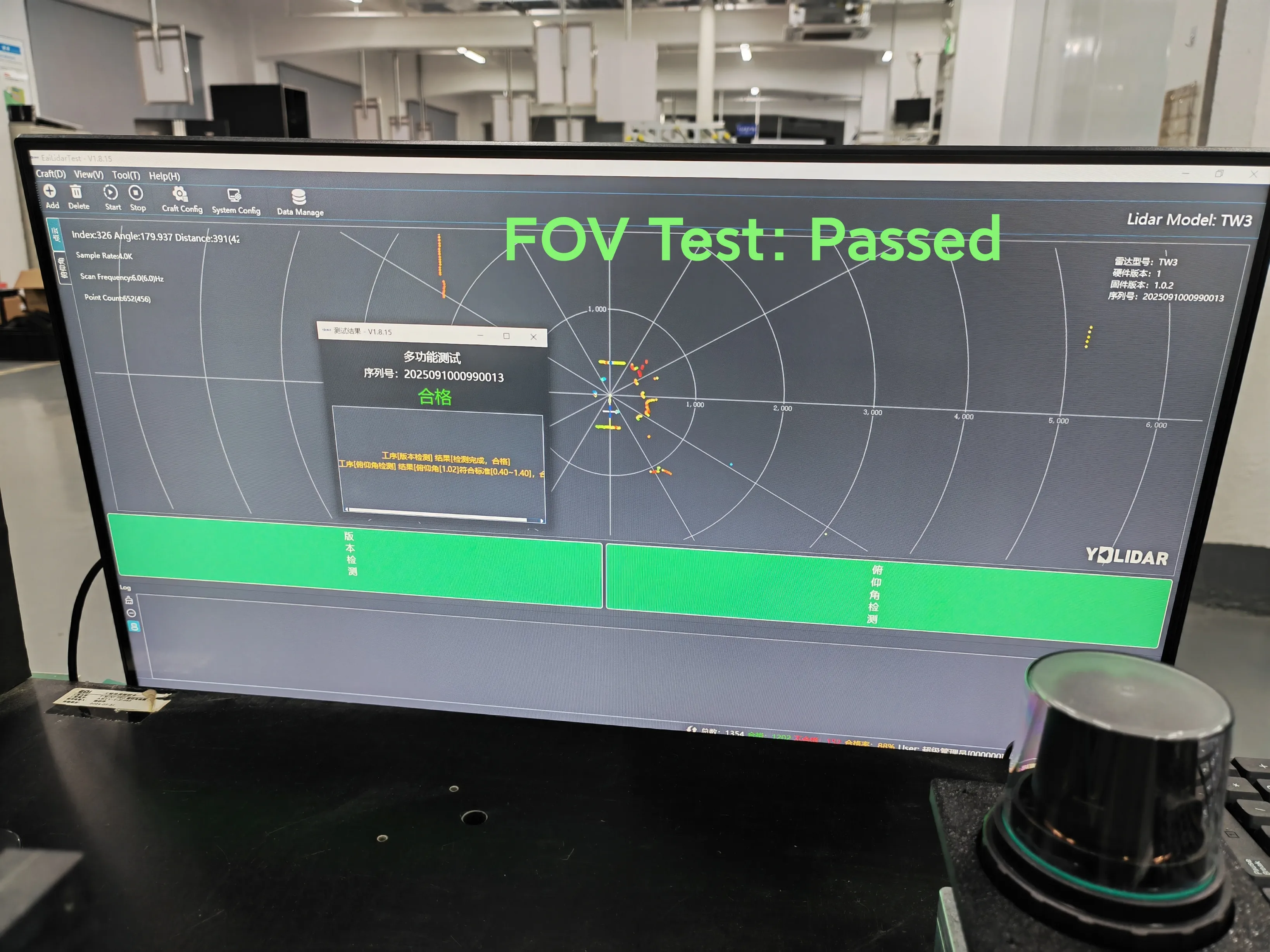
4th Feature: Specialized Materials Resisting Chemical Corrosion for Enhanced Durability
Chlorine, salt, and other chemicals in pool water are “invisible killers” of electronic devices, continuously corroding equipment, leading to waterproofing failures, component damage, and increased after-sales costs and brand risks. YDLIDAR TW3 uses high-performance composite materials resistant to salt, chlorine, and oxidation, fundamentally enduring harsh pool chemical environments. This significantly extends product lifespan, reduces failure rates, and lowers maintenance costs, providing robust support for the reliability of pool cleaning robots.
5th Feature: Rugged Housing with Deep Waterproofing for Depths Up to 5 Meters
Waterproofing is the lifeline of underwater devices. YDLIDAR TW3 adopts a dual-layer sealed waterproof structure with an IP68 protection rating, ensuring long-term stable operation at depths of 0.5 to 5 meters. It fearlessly withstands water pressure and penetration risks, delivering unwavering support for all-weather underwater robot operations.
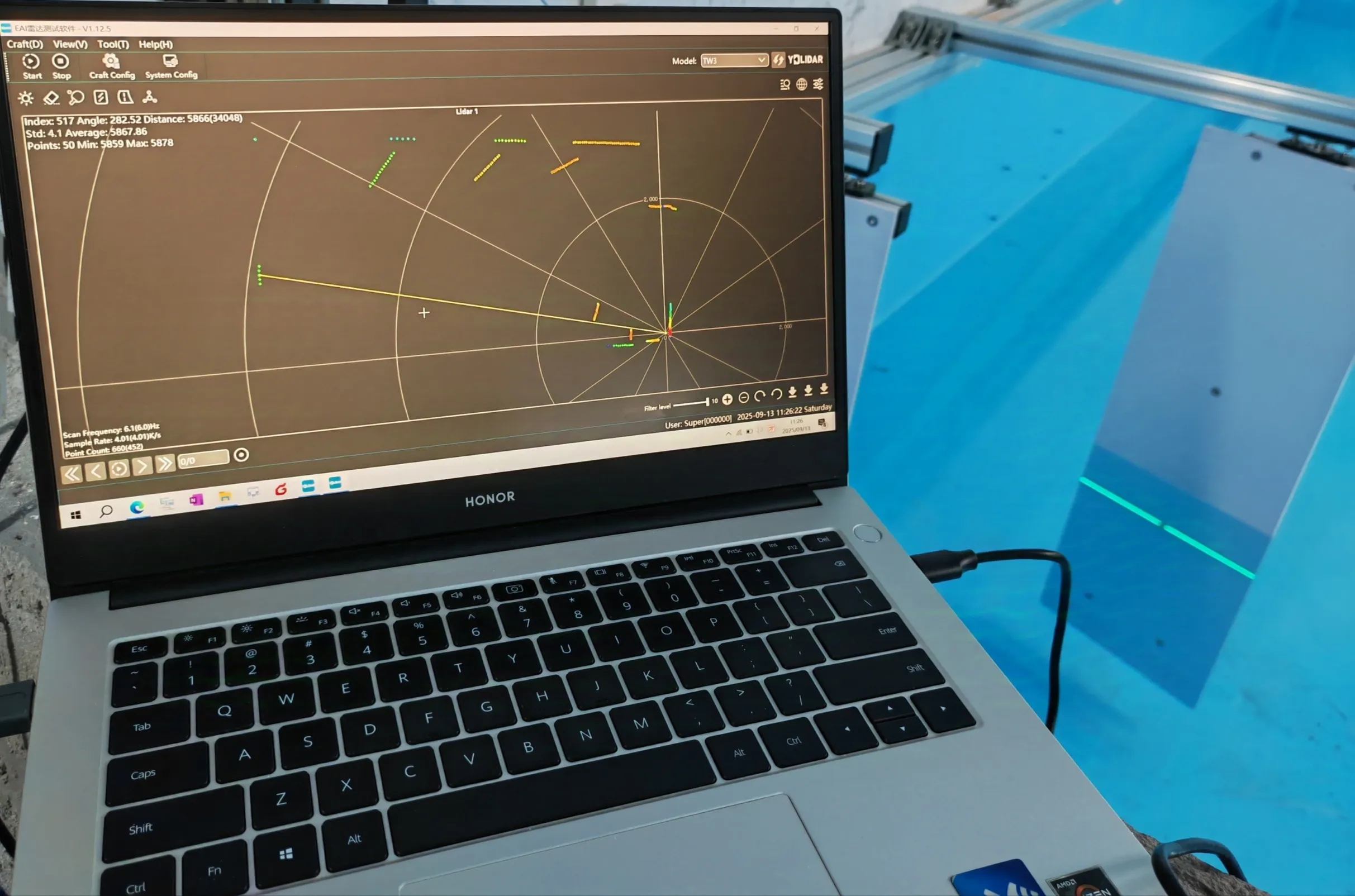
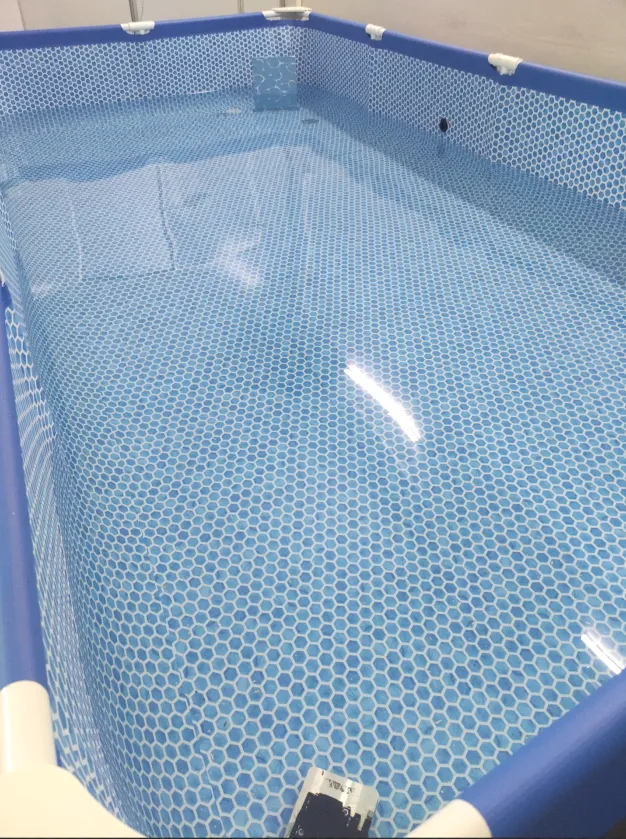 |
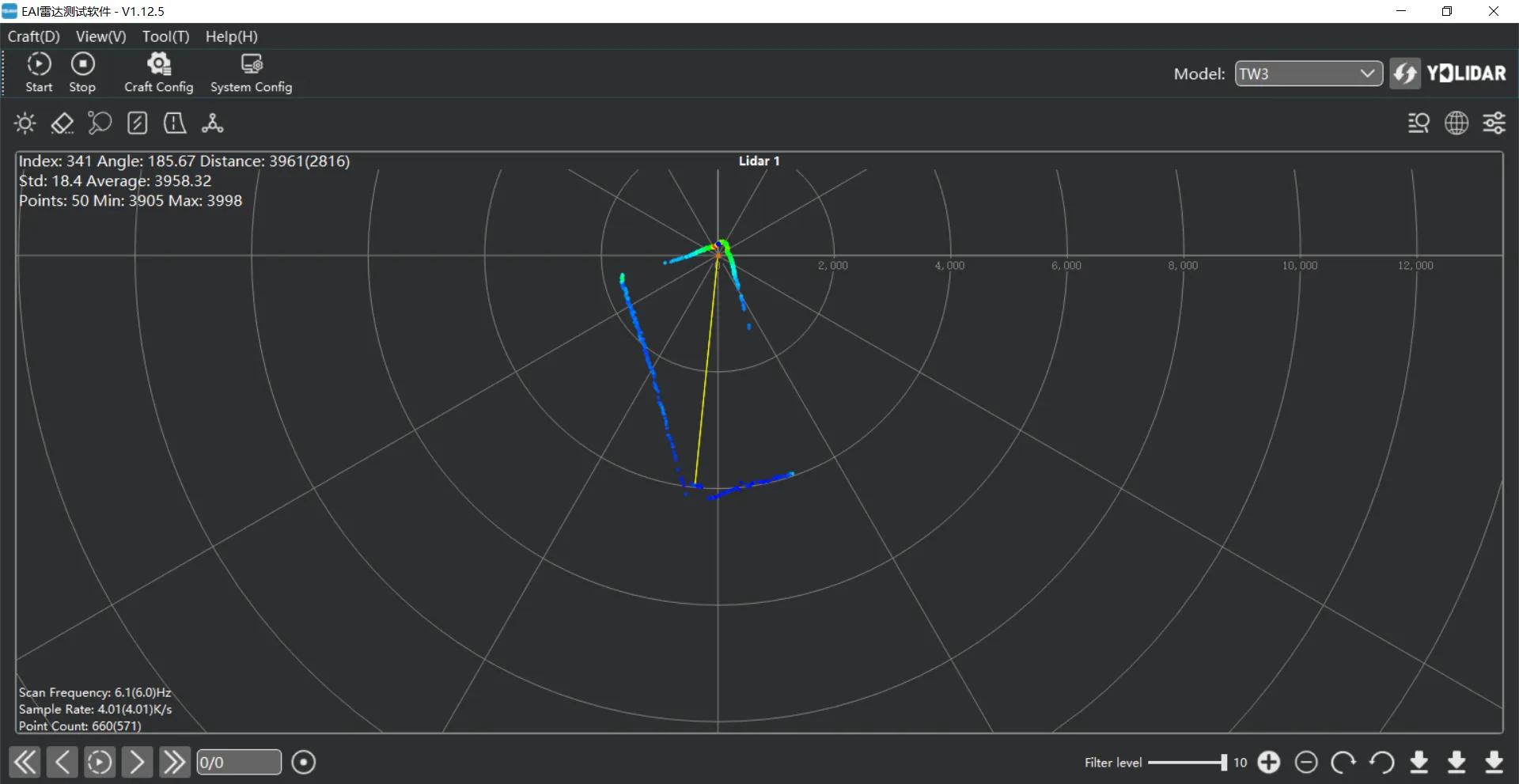 |
Ranging Tests on Various Materials: white baffles, waterproof paint, PVC tiles, mosaic surfaces, point cloud remains normal, and underwater accuracy meets expectations.
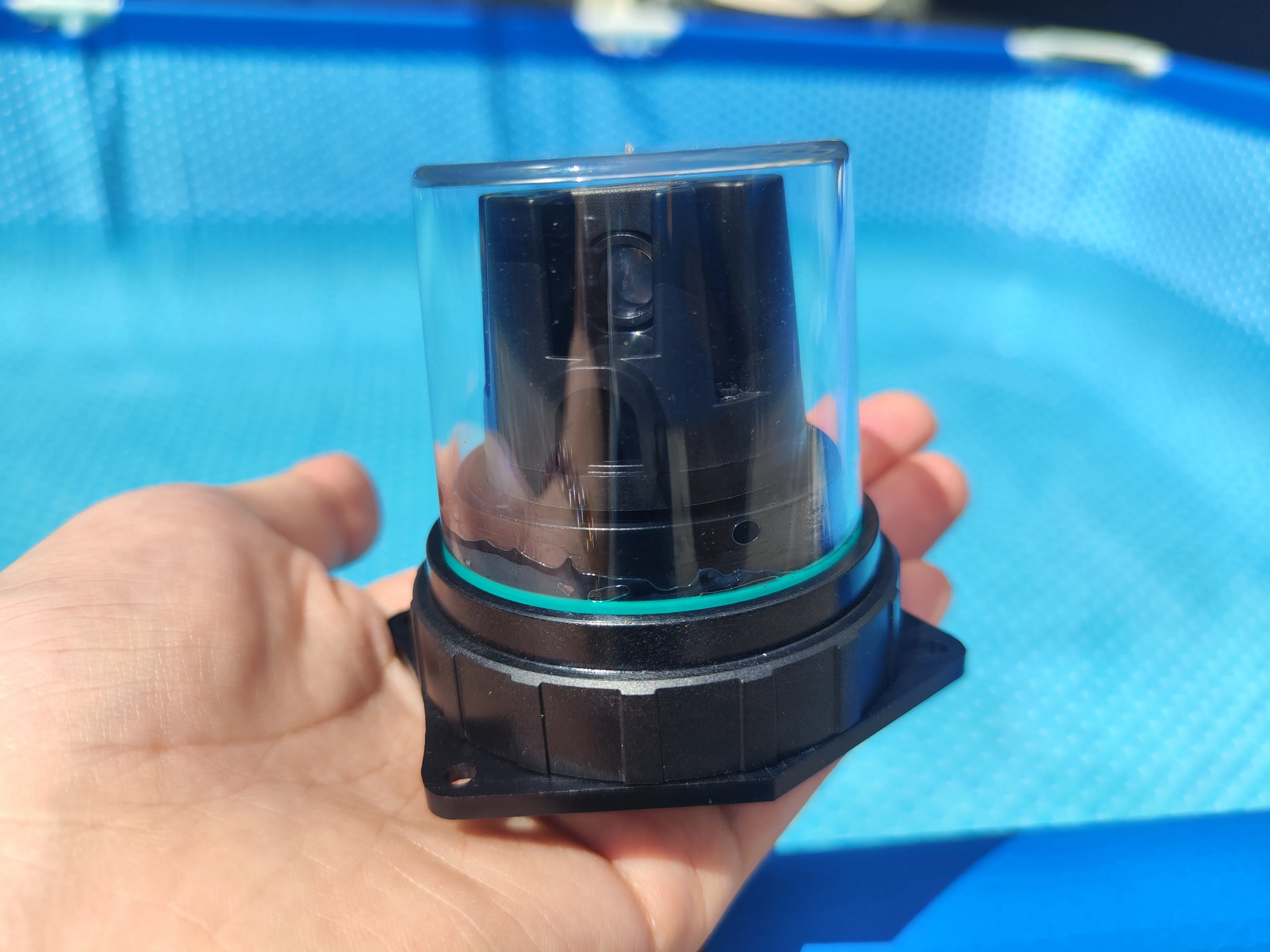 |
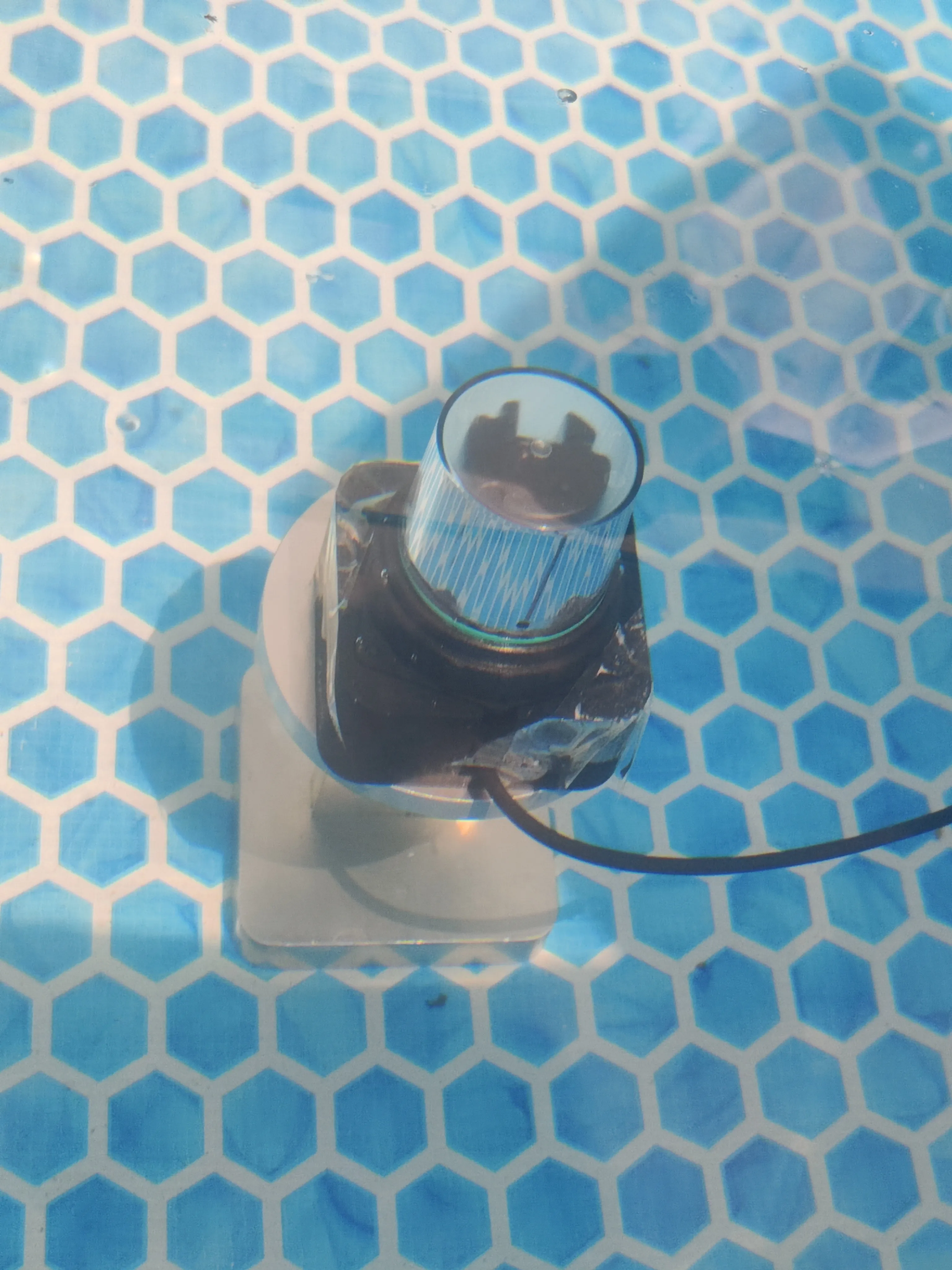 |
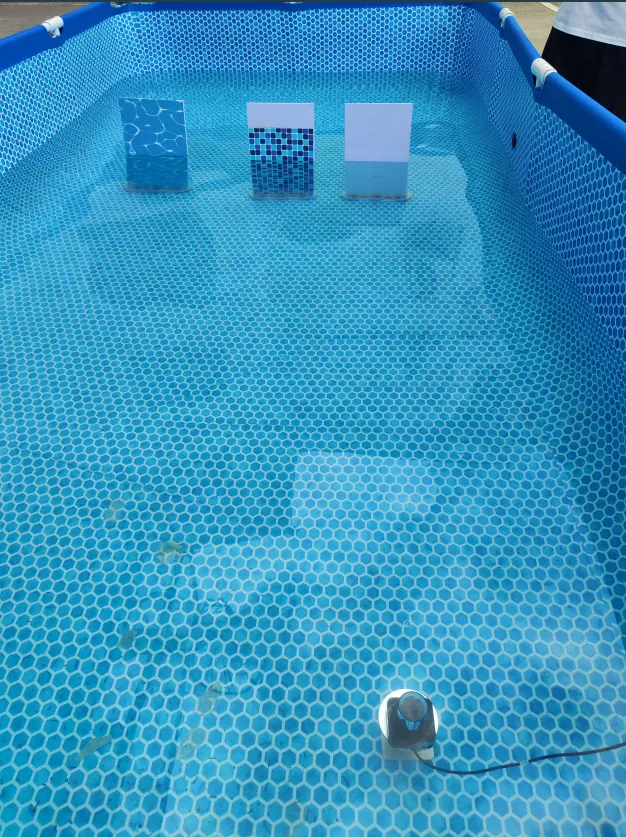
Empowering the Intelligent Transformation of Pool Cleaning Robots: A Generational Leap from “Feature Robot” to “Smart Robot” Helping Brands Seize Definition Rights for the Next Generation of Pool Cleaning Robots
Industry veterans have noted that although pool robots emerged forty years ago, their product form, intelligence level, and supply chain maturity lag significantly behind those of floor cleaning robots, which were introduced over a decade later—as if “they belong to a previous era.” Ultimately, this gap stems from the lack of cost-effective consumer-grade underwater smart sensors. EAI’s underwater green laser LiDAR YDLIDAR TW3 effectively fills this void. This represents not only a technological upgrade but a reshaping of business models and brand value.
Currently, YDLIDAR TW3 has completed mold development and entered mass production, with partnerships established with multiple top-tier domestic pool cleaning manufacturers. EAI Tech is committed to collaborating with Top brands to propel the pool cleaning industry into a new era of intelligence, reliability, and efficiency, empowering brands to seize the definition rights for the next generation of pool cleaning robots.
Product is in high demand! Contact the YDLIDAR team: sales@ydlidar.com

As the pool cleaning robot industry advances toward full intelligence, we face a series of critical technological challenges. Perception bottlenecks: Traditional infrared sensors and cameras are highly susceptible to interference from refractive indices, intense light, and turbid water, leading to positioning drift, obstacle avoidance failures, inefficient cleaning, and frequent user complaints. Intelligence lag: The lack of stable and accurate environmental perception makes it difficult for robots to achieve true autonomous path planning and mapping, trapping product iteration in homogenized competition. In today’s era of rapid AI development, non-intelligent pool cleaning robots seem increasingly out of place.
As a globally leading smart sensor company, EAI Tech deeply understands the challenges and demands of the pool cleaning robot industry. Today, we proudly introduce a groundbreaking solution—the world’s first mass-produced consumer-grade underwater green laser LiDAR, the YDLIDAR TW3. This is not just a smart sensor but a key to breaking technological barriers and enabling generational leaps in product performance, injecting new momentum into the intelligent transformation of the pool cleaning industry.
Addressing Pain Points: How YDLIDAR TW3 Breaks Technological Barriers and Reshapes Pool Cleaning Reliability Standards
1st Feature: 100Klux Anti-Light Technology to Overcome Ambient Light and Turbid Water Interference
Traditional infrared laser LiDARs are easily affected by strong light reflections from water ripples, underwater lighting, and turbid water, causing positioning errors, obstacle avoidance failures, and significantly reduced detection ranges—sometimes below 0.5 meters—greatly diminishing cleaning efficiency. In contrast, EAI’s green laser LiDAR TW3, equipped with proprietary 100Klux strong light suppression technology, offers superior penetration and longer effective ranging underwater, making it ideal for outdoor aquatic environments. Even in turbid water with high suspended particles, it maintains stable and precise detection performance, overcoming surface glare and turbidity interference thoroughly, delivering true all-weather excellence and providing a reliable perceptual foundation for intelligent algorithms.
 |
 |
Strong Light Resistance Test: TW3 tested under 100KLux light intensity and water turbidity ≤0.5NTU, achieving a ranging distance >3 meters.
 |
 |

Turbidity Test: TW3 tested under ≤100KLux light intensity and 5NTU turbidity, achieving a ranging distance >1.3 meters.
2nd Feature: Distortion-Free Point Cloud, 360° Scanning for Precise Navigation and Obstacle Avoidance
Many pool cleaning robots still rely on random collision cleaning methods without path planning, resulting in low efficiency. YDLIDAR TW3 utilizes distortion-free point cloud technology and 360° scanning to generate high-fidelity, high-precision underwater environmental point cloud maps in real time, accurately replicating pool floor terrain, steps, drains, and even dynamic obstacles. This enables cleaning robots to achieve centimeter-level precision in real-world map reconstruction, empowering them with precise positioning, autonomous navigation, and intelligent obstacle avoidance capabilities.
Mapping Test: TW3 fixed on a fixture and placed in a pool for scanning, with normal point cloud output—no broken lines or noise fluctuations.
3rd Feature: Precision Elevation Angle for Perfect Adaptation to Complex Pool Structures
Pool floors exhibit extreme complexity, including slopes, walls, and irregular shapes, making path planning more challenging for underwater robots than for ground robots. YDLIDAR TW3 features an innovative 1° precision elevation angle design, allowing the laser beam to perfectly align with the junction of pool walls and floors, eliminating scanning blind spots in corners and slopes thoroughly, achieving full coverage cleaning, and enhancing end-user satisfaction.

4th Feature: Specialized Materials Resisting Chemical Corrosion for Enhanced Durability
Chlorine, salt, and other chemicals in pool water are “invisible killers” of electronic devices, continuously corroding equipment, leading to waterproofing failures, component damage, and increased after-sales costs and brand risks. YDLIDAR TW3 uses high-performance composite materials resistant to salt, chlorine, and oxidation, fundamentally enduring harsh pool chemical environments. This significantly extends product lifespan, reduces failure rates, and lowers maintenance costs, providing robust support for the reliability of pool cleaning robots.
5th Feature: Rugged Housing with Deep Waterproofing for Depths Up to 5 Meters
Waterproofing is the lifeline of underwater devices. YDLIDAR TW3 adopts a dual-layer sealed waterproof structure with an IP68 protection rating, ensuring long-term stable operation at depths of 0.5 to 5 meters. It fearlessly withstands water pressure and penetration risks, delivering unwavering support for all-weather underwater robot operations.

 |
 |
Ranging Tests on Various Materials: white baffles, waterproof paint, PVC tiles, mosaic surfaces, point cloud remains normal, and underwater accuracy meets expectations.
 |
 |

Empowering the Intelligent Transformation of Pool Cleaning Robots: A Generational Leap from “Feature Robot” to “Smart Robot” Helping Brands Seize Definition Rights for the Next Generation of Pool Cleaning Robots
Industry veterans have noted that although pool robots emerged forty years ago, their product form, intelligence level, and supply chain maturity lag significantly behind those of floor cleaning robots, which were introduced over a decade later—as if “they belong to a previous era.” Ultimately, this gap stems from the lack of cost-effective consumer-grade underwater smart sensors. EAI’s underwater green laser LiDAR YDLIDAR TW3 effectively fills this void. This represents not only a technological upgrade but a reshaping of business models and brand value.
Currently, YDLIDAR TW3 has completed mold development and entered mass production, with partnerships established with multiple top-tier domestic pool cleaning manufacturers. EAI Tech is committed to collaborating with Top brands to propel the pool cleaning industry into a new era of intelligence, reliability, and efficiency, empowering brands to seize the definition rights for the next generation of pool cleaning robots.
Product is in high demand! Contact the YDLIDAR team: sales@ydlidar.com
Prev: No more data
